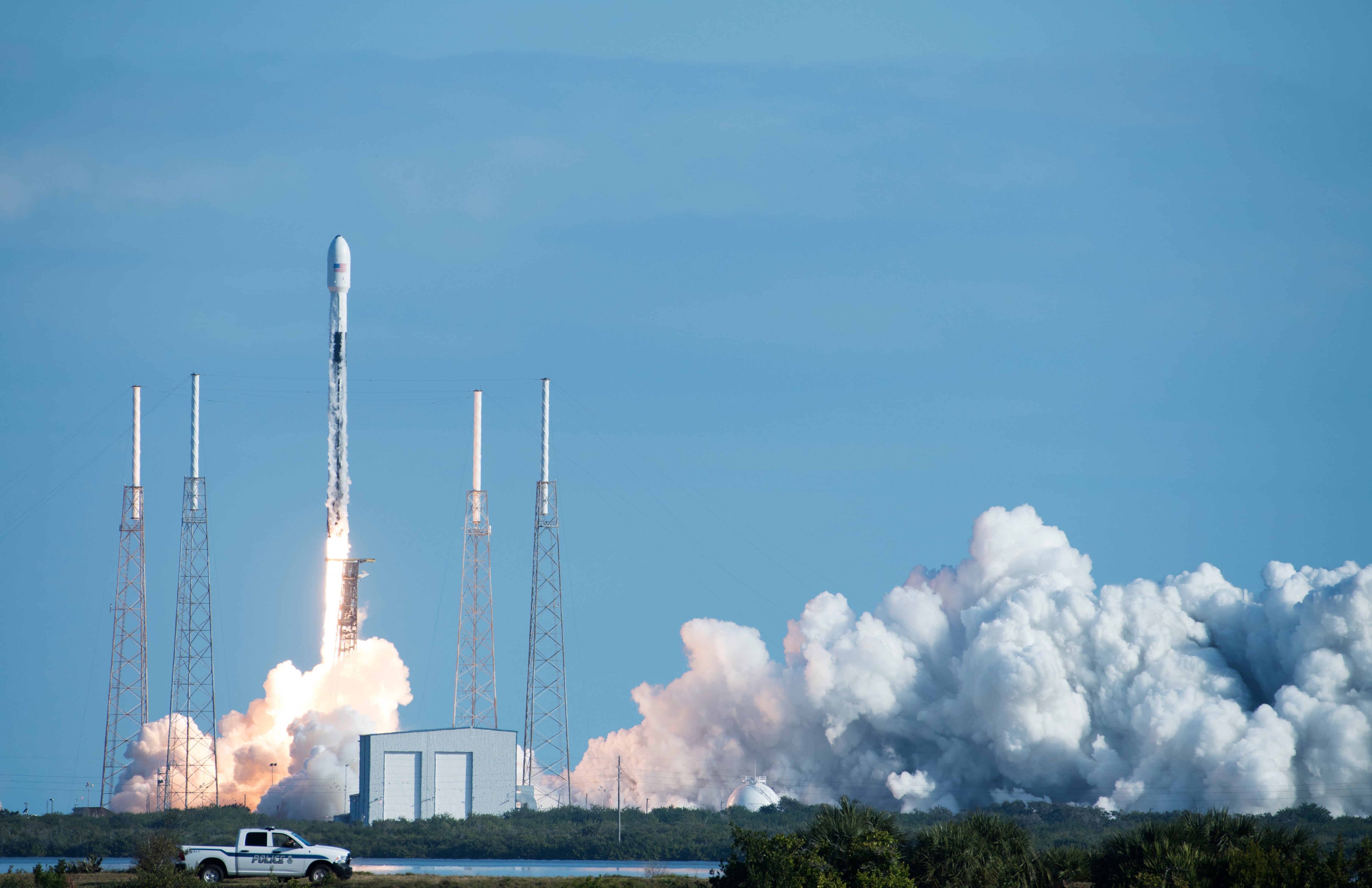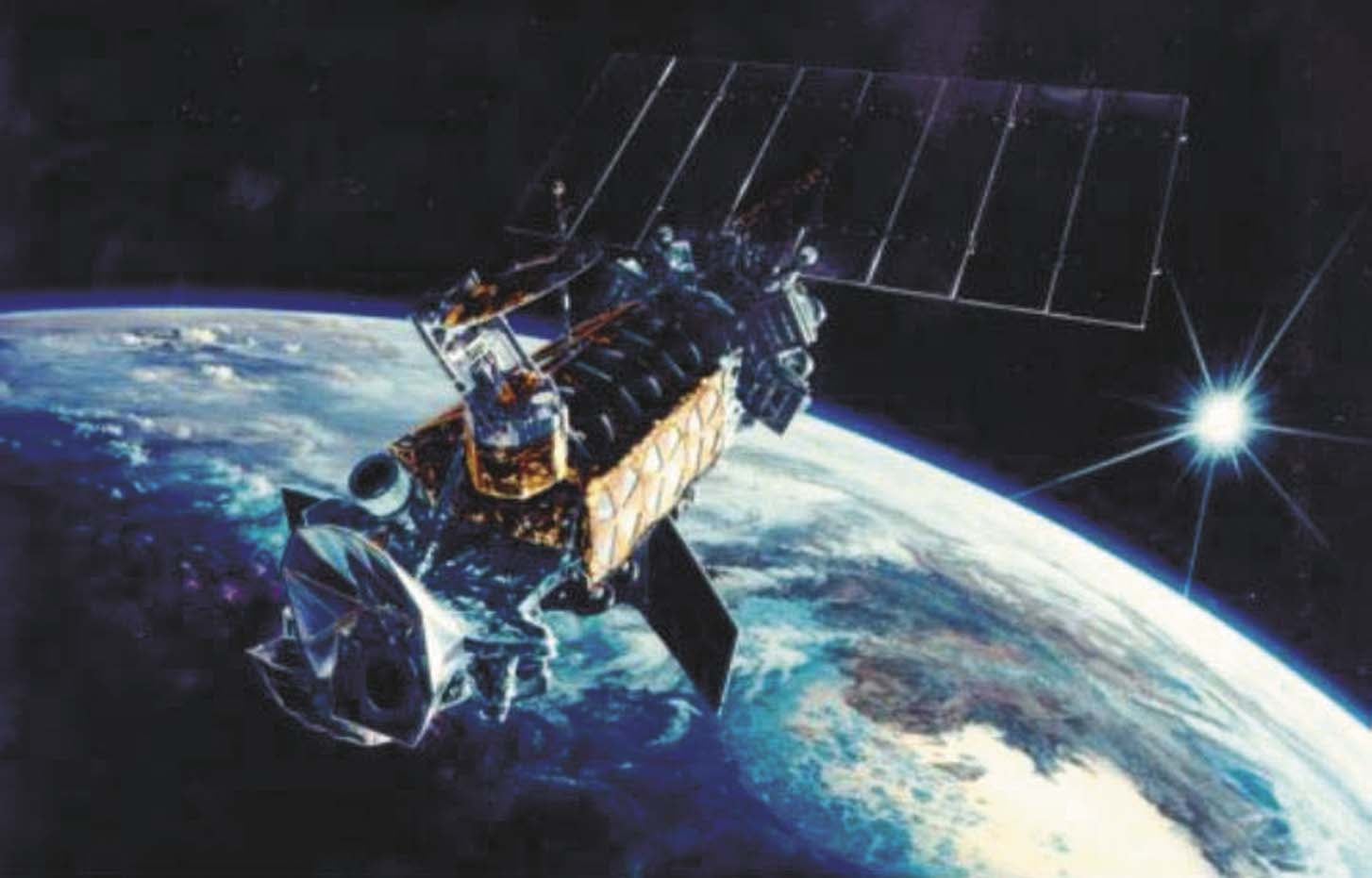WASHINGTON — The U.S. Space Force hopes its prototype low-Earth orbit weather satellites will entice commercial businesses and allied nations to partner up on the project, reducing the cost of delivering critical weather data to the war fighter.
The U.S. Air Force has been trying to replace the aging Defense Meteorological Satellite Program for years, ever since Congress opted to can it in 2015. Two capabilities in particular have proven a challenge for replacement: cloud characterization and theater weather imagery.
But now the Space Force thinks it has the answer. By leveraging the increasingly popular low-Earth orbit architecture demonstrated by SpaceX’s Starlink constellation and other experiments, the military believes it can lower the cost of individual satellites, increase the resiliency of the systems and attract new partnerships.
In a recent interview with SpaceNews, Space and Missile Systems Center Portfolio Architect Col. Russell Teehan explained the thinking behind the new approach. The Air Force previously struggled to attract partners due to the sheer cost of the systems, he said. After all, when a single satellite costs more than $700 million, it’s difficult to find someone to share the load. That price point forced the Air Force to build exquisite systems, comprised of just a handful of satellites operating in higher orbits. As the Pentagon has come to understand with its other exquisite systems, in wartime this leaves the military’s space-based capabilities dependent on just a few satellites that are difficult to defend.
A proliferation low-Earth orbit, or P-LEO, constellation may solve both of those problems. Smaller LEO satellites can deliver the same capabilities at a fraction of the cost per satellite, while the sheer number of targets in the constellation means that the loss of a single satellite isn’t crippling.
“The goal is in doing that, that ideally the commercial and allied sector would increase their desire to partner on those activities,” Teehan said. “[T]he activities in the past were generally $700 million-plus individual systems, which forced us into architectures that were [made up of less than five satellites] that were significantly vulnerable if we were in a time of conflict.”
The Space Force is targeting satellites in the $30-50 million range, Teehan added.

The Space Force has issued a trio of prototype contracts this summer for new space-based sensors that can collect cloud characterization and theater weather imagery from low Earth orbit. Raytheon Technologies, General Atomics and Astra are leading separate prototyping efforts after receiving contracts from the Space Enterprise Consortium.
The Space Force is asking for $131 million to continue these efforts in fiscal 2021.
The decision to settle on LEO for this critical weather data follows years of disarray as the Pentagon has worked to find a replacement for the Defense Meteorological Satellite Program, or DMSP. For decades, the military has relied almost entirely on that program for weather data. The first satellite was launched in the 1960s, with the constellation being replenished with updated generations of weather satellites over the years. Today, there are just four DMSP satellites in operation.
But no satellite is built to last forever, and there are no new DMSP satellites coming. As those satellites reach the end of their service life, they leave the two vital gaps of cloud characterization and theater weather imagery.
Foreseeing this problem, Congress in 2015 directed the Air Force to launch a new weather satellite program to replace DMSP. The Air Force began working on a new constellation to launch in 2024, but there was a problem: a four-year gap between the projected end of DMSP’s service life in 2020 and the launch of the new satellites.
To fill that gap, the Air Force collaborated with NASA on ORS-8, a satellite to be launched just before DMSP expired. While a contract was awarded to Sierra Nevada Corp. to build that gap-filling satellite, it was protested, rescinded and ultimately canceled by the Air Force after the service determined DMSP’s end-of-life date would extend beyond 2024.
In 2019, the Air Force proposed a new solution: a free-flying space vehicle that would operate in low Earth orbit. The Pentagon asked for $101 million to begin the effort in fiscal 2020, with plans to launch it in 2024.
But that plan didn’t last the year.
In September, the Air Force told Congress it wanted to scrap the free-flying space vehicle in favor of a new approach. Based on a space-based environmental monitoring capability assessment and strategy review completed in April 2019, the Air Force found it best to switch to an LEO architecture for scalability and increased resilience. Though skeptical, Congress ultimately swapped the funding for the free-flyer space vehicle to the new program.
“Across the board in our weather strategies ... we’re looking at multilayers of an architecture, how to most cost-effectively move forward in capability. They can be incrementally delivered over time. So that becomes a mix of large satellites that do missions and smaller satellites that we can launch in order to grow capability over time,” Col. Dennis Bythewood, program executive officer for space development at the Air Force’s Space and Missile Systems Center, said in September 2019. “We’re finding much more capable sensors being delivered in small packages that we think we can grow mission sets over time. Those are the types of things that we are looking at within our strategy.”
Nathan Strout covers space, unmanned and intelligence systems for C4ISRNET.








